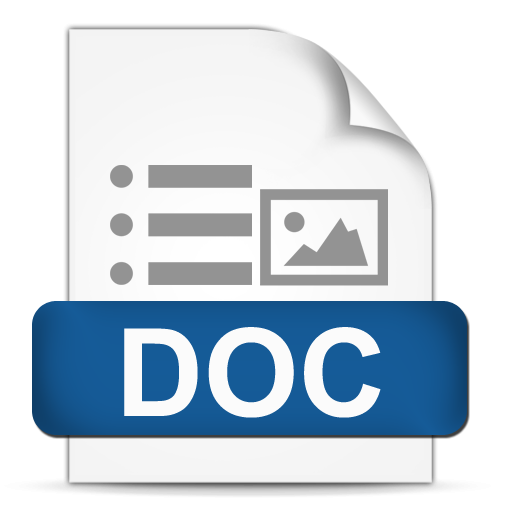Analysis of Low-Income Community Level Models as Determinants of Waste Management, Clean Living Behavior, and Environmental Health in Surabaya City
 Viewed = 0 time(s)
Viewed = 0 time(s)
Abstract
As the second largest city in Indonesia, Surabaya deals with various problems, one of which is about poverty. It will lead to other problems, such as environmental problems, especially in the field of environmental health, clean water. The volume of household waste in Surabaya City which reaches 8-9 thousand tons/m3 also exacerbates environmental and environmental health problems. This study aims to analyze the influence of Low-Income Communities (LIC) on Clean Living Behavior (CLB) and Waste Management, the influence of Clean-Living Behavior (CLB) on Environmental Health and the influence of Waste on Environmental Health. This type of research is descriptive quantitative. The source of research data used secondary data obtained from several data sources with a target of 154 urban villages in the Surabaya city. Data collection techniques were carried out using Field Research techniques. The research method employed the AMOS SEM method. The results of the study revealed that Low-Income Communities have a significant influence on the variables of Clean-Living Behavior and Waste in the Surabaya Community. Meanwhile, Clean Living Behavior and Waste do not have a significant influence on Environmental Health variables in the people of Surabaya.
References
Amiruddin, Z. (2022). Statistik Pendidikan. Media Akademi, February, 1–353.
Baloch, M. A., Danish, Khan, S. U. D., Ulucak, Z. Ş., & Ahmad, A. (2020). Analyzing the relationship between poverty, income inequality, and CO2 emission in Sub-Saharan African countries. Science of the Total Environment, 740. https://doi.org/10.1016/j.scitotenv.2020.139867
Bošnjaković, M., Stojkov, M., & Jurjević, M. (2019). Environmental impact of geothermal power plants. Tehnicki Vjesnik, 26(5). https://doi.org/10.17559/TV-20180829122640
Cammarelle, A., Viscecchia, R., & Bimbo, F. (2021). Intention to purchase active and intelligent packaging to reduce household food waste: Evidence from italian consumers. Sustainability (Switzerland), 13(8). https://doi.org/10.3390/su13084486
Chakrabarti, A., & Dhar, A. (2017). Economic Development. Routledge Handbook of Marxian Economics, 310–322. https://doi.org/10.4324/9781315774206-29
Ferdinand, A. (2013). Metode Penelitian Manajemen: Pedoman Penelitian Skripsi, Tesis dan Desertasi.
Gweshengwe, B., & Hassan, N. H. (2020). Defining the characteristics of poverty and their implications for poverty analysis. In Cogent Social Sciences (Vol. 6, Nomor 1). https://doi.org/10.1080/23311886.2020.1768669
Hair, Joseph F and Money, Arthur H and Samouel, Philip and Page, M. (2010). Multivariate Data Analysis.
Khan, S. A. R. (2019). The nexus between carbon emissions, poverty, economic growth, and logistics operations-empirical evidence from southeast asian countries. Environmental Science and Pollution Research, 26(13), 13210–13220. https://doi.org/10.1007/s11356-019-04829-4
Nasruddin, R., & Haq, I. (2020). Pembatasan Sosial Berskala Besar (PSBB) dan Masyarakat Berpenghasilan Rendah. SALAM: Jurnal Sosial dan Budaya Syar-i, 7(7). https://doi.org/10.15408/sjsbs.v7i7.15569
Novita, A. A. (2021). Maintaining the SDGs Target During Pandemic COVID 19. Proceedings of the 3rd Annual International Conference on Public and Business Administration (AICoBPA 2020), 191. https://doi.org/10.2991/aebmr.k.210928.109
Odonkor, S. T., Frimpong, K., & Kurantin, N. (2020). An assessment of house-hold solid waste management in a large Ghanaian district. Heliyon, 6(1). https://doi.org/10.1016/j.heliyon.2019.e03040
Pires, A., & Martinho, G. (2019). Waste hierarchy index for circular economy in waste management. Waste Management, 95. https://doi.org/10.1016/j.wasman.2019.06.014
PKP Kota Surabaya. (2021). enilaian Kinerja Puskesmas Kota Surabaya 2021.
Putri, R. M., Rosdiana, Y., & Nisa, A. C. (2019). Application of Clean and Healthy Living Behavior (PHBS) From The Household Knowledge and Attitude Study. Journal Of Nursing Practice, 3(1). https://doi.org/10.30994/jnp.v3i1.64
Rahmawati, A. F., & Kristantini, I. (2021). Clean and Healthy Living Behavior (PHBS) Strategy to Prevent the Spread of the Covid-19 Virus. Proceeding of International Conference on Science, Health, And Technology.
Ravallion, M. (2020). On measuring global poverty. In Annual Review of Economics (Vol. 12). https://doi.org/10.1146/annurev-economics-081919-022924
Ridena, S. (2020). Kemiskinan Dan Lingkungan: Perspektif Kemiskinan Di Perkotaan Dan Pedesaan. Jurnal Litbang Sukowati : Media Penelitian dan Pengembangan, 5(1), 39–48. https://doi.org/10.32630/sukowati.v5i1.196
Santika, W. G., Anisuzzaman, M., Simsek, Y., Bahri, P. A., Shafiullah, G. M., & Urmee, T. (2020). Implications of the Sustainable Development Goals on national energy demand: The case of Indonesia. Energy, 196. https://doi.org/10.1016/j.energy.2020.117100
Sari, D. A., Margules, C., Lim, H. S., Sayer, J. A., Boedhihartono, A. K., Macgregor, C. J., Dale, A. P., & Poon, E. (2022). Performance Auditing to Assess the Implementation of the Sustainable Development Goals (SDGs) in Indonesia. Sustainability (Switzerland), 14(19). https://doi.org/10.3390/su141912772
Solimun. (2017). Multivariate Analysis Structural Equation Modelling (SEM).
Sugiharti, L., Purwono, R., Esquivias, M. A., & Jayanti, A. D. (2022). Poverty Dynamics in Indonesia: The Prevalence and Causes of Chronic Poverty. Journal of Population and Social Studies, 30. https://doi.org/10.25133/JPSSv302022.025
Suherli, H. F. D., Wijaya, I. N. S., & Setyono, D. A. (2020). Keterjangkauan Masyarakat Berpenghasilan Rendah di Kawasan Sempadan Rel Kereta Kota Malang Dalam Pembelian Rumah. Planning for Urban Region and Environment Journal (PURE), 9(2), 147–158.
Vitriana, A. (2022). Implementation of SDGs Target 11.1 in Metropolitan Areas of West Java Indonesia. IOP Conference Series: Earth and Environmental Science, 1058(1). https://doi.org/10.1088/1755-1315/1058/1/012025
Walpole, R. E. (1995). Pengantar Statistika. Standard Methods for the Examination of Water and Wastewater, 1, 18. http://dx.doi.org/10.1016/j.asw.2013.04.001%5Cnhttp://journals.cambridge.org/abstract_S0140525X00005756%5CnLib scanned%5Cnhttp://www.br-ie.org/pub/index.php/rbie/article/view/1293%5Cnhttp://www-psych.nmsu.edu/~pfoltz/reprints/Edmedia99.html%5Cnhttp://urd.
Waluyo Minto. (2011). Panduan dan Aplikasi Structural Eqution Modeling.
Wulansari, A. D. (2023). Implementasi Gerakan Indonesia Sadar ADMINDUK Melalui Program Inovasi oleh DISDUKCAPIL Kota Surabaya. JIP: Jurnal Inovasi Penelitian , 3(9), 7473–7478.

 https://doi.org/10.35877/454RI.qems1728
https://doi.org/10.35877/454RI.qems1728








